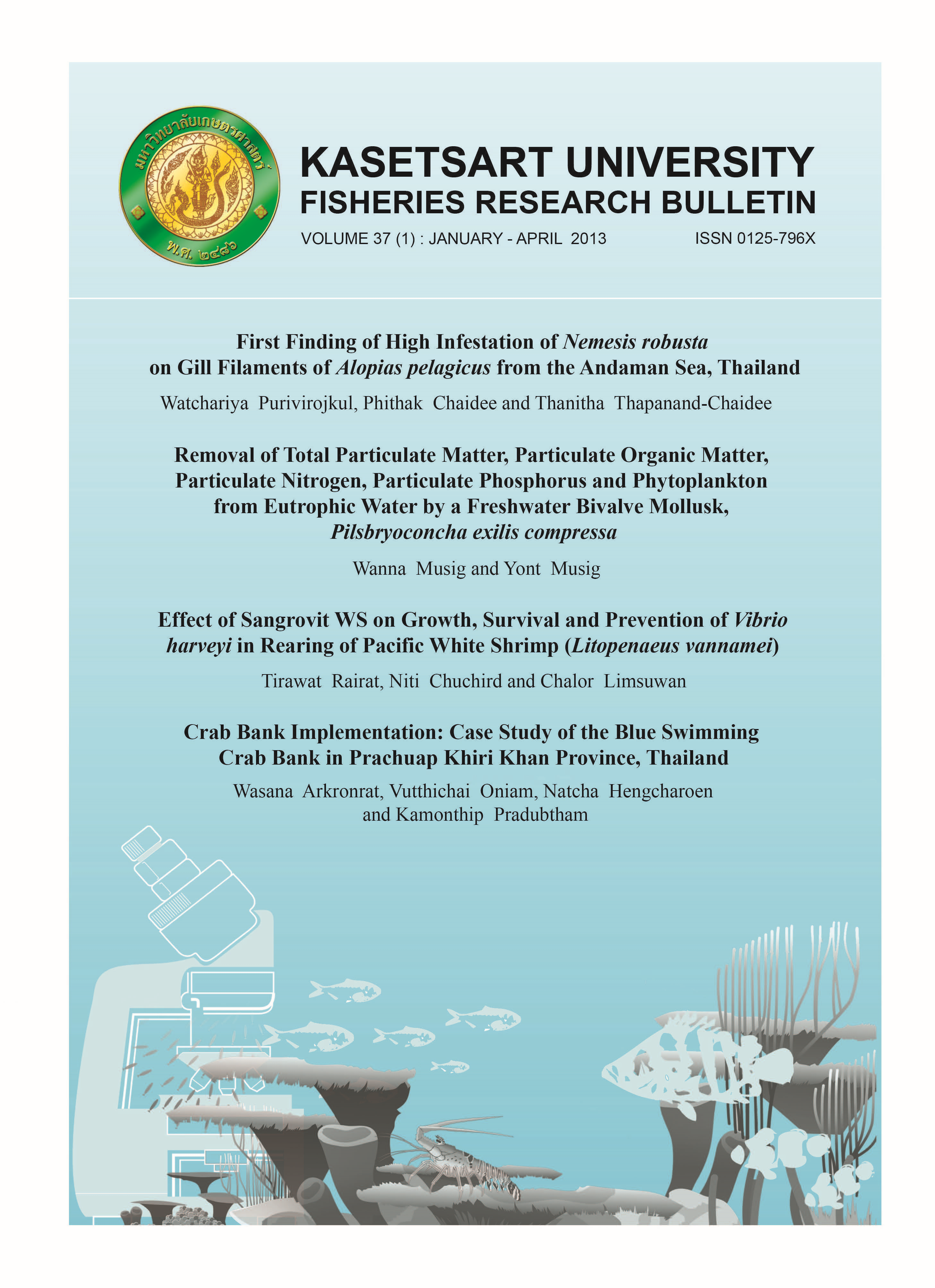Crab Bank Implementation: Case Study of the Blue Swimming Crab Bank in Prachuap Khiri Khan Province, Thailand
Main Article Content
Abstract
In Prachuap Khiri Khan province, Thailand, fishers observed that the blue swimming crab resources had rapidly declined due to overfishing, especially in the areas of Ao Noi Bay, Prachuap Khiri Khan Bay, Klongwan Beach and Baan Krut Beach. The crab bank is a sustainable crab conservation project set-up in a fishing village for a pilot scheme on marine resources conservation. The objectives of this study were to clarify the changes in the blue swimming crab yield after the crab bank implementation, determine the participation level of fishers in the crab bank activity, and appraise the economic considerations for guidelines on the long-term implementation of the crab bank and for the improvement of subsequent projects to be undertaken in these areas. The study revealed that the juvenile crab yield in the study areas increased after the crab bank had been in operation for 4-8 months. The participation of fishers in the crab bank at the Baan Krut fishing village was at a high level, but the crab bank at the Ao Noi, Ta Monglai and Klongwan fishing villages were at a low level. After 8 months of crab bank operation, the crab banks at the Ta Monglai and Baan Krut fishing villages were still active but the crab banks at the Ao Noi and Klongwan fishing villages were closed temporarily because participation of fishers was at a very low level and there was a lack of subsidy for the operating expenses and maintenance of the crab bank. The study concluded that the success of a crab bank project is primarily dependent on the local communities and thus it is recommended that the local government should use all means available to encourage higher program participation by the fishers (e.g. promotional activities) and to support maintenance of the crab bank.


